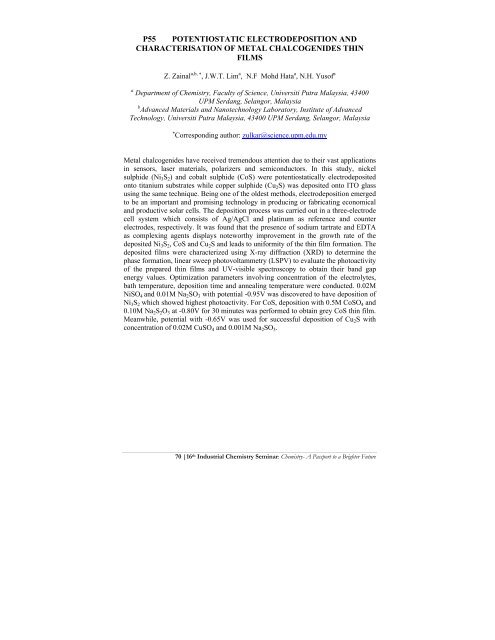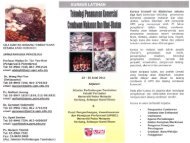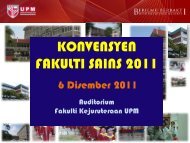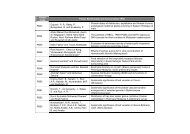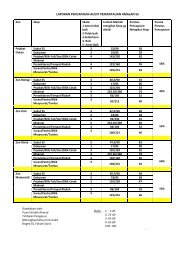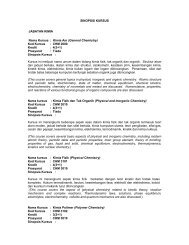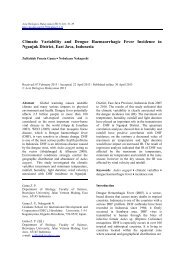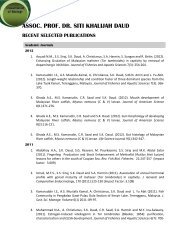Programme Book - UPM - Universiti Putra Malaysia
Programme Book - UPM - Universiti Putra Malaysia
Programme Book - UPM - Universiti Putra Malaysia
You also want an ePaper? Increase the reach of your titles
YUMPU automatically turns print PDFs into web optimized ePapers that Google loves.
P55 POTENTIOSTATIC ELECTRODEPOSITION ANDCHARACTERISATION OF METAL CHALCOGENIDES THINFILMSZ. Zainal a,b, ∗ , J.W.T. Lim a , N.F Mohd Hata a , N.H. Yusof aa Department of Chemistry, Faculty of Science, <strong>Universiti</strong> <strong>Putra</strong> <strong>Malaysia</strong>, 43400<strong>UPM</strong> Serdang, Selangor, <strong>Malaysia</strong>b Advanced Materials and Nanotechnology Laboratory, Institute of AdvancedTechnology, <strong>Universiti</strong> <strong>Putra</strong> <strong>Malaysia</strong>, 43400 <strong>UPM</strong> Serdang, Selangor, <strong>Malaysia</strong>∗ Corresponding author: zulkar@science.upm.edu.myMetal chalcogenides have received tremendous attention due to their vast applicationsin sensors, laser materials, polarizers and semiconductors. In this study, nickelsulphide (Ni 3 S 2 ) and cobalt sulphide (CoS) were potentiostatically electrodepositedonto titanium substrates while copper sulphide (Cu 2 S) was deposited onto ITO glassusing the same technique. Being one of the oldest methods, electrodeposition emergedto be an important and promising technology in producing or fabricating economicaland productive solar cells. The deposition process was carried out in a three-electrodecell system which consists of Ag/AgCl and platinum as reference and counterelectrodes, respectively. It was found that the presence of sodium tartrate and EDTAas complexing agents displays noteworthy improvement in the growth rate of thedeposited Ni 3 S 2 , CoS and Cu 2 S and leads to uniformity of the thin film formation. Thedeposited films were characterized using X-ray diffraction (XRD) to determine thephase formation, linear sweep photovoltammetry (LSPV) to evaluate the photoactivityof the prepared thin films and UV-visible spectroscopy to obtain their band gapenergy values. Optimization parameters involving concentration of the electrolytes,bath temperature, deposition time and annealing temperature were conducted. 0.02MNiSO 4 and 0.01M Na 2 SO 3 with potential -0.95V was discovered to have deposition ofNi 3 S 2 which showed highest photoactivity. For CoS, deposition with 0.5M CoSO 4 and0.10M Na 2 S 2 O 3 at -0.80V for 30 minutes was performed to obtain grey CoS thin film.Meanwhile, potential with -0.65V was used for successful deposition of Cu 2 S withconcentration of 0.02M CuSO 4 and 0.001M Na 2 SO 3 .70 |16 th Industrial Chemistry Seminar: Chemistry- A Passport to a Brighter Future


